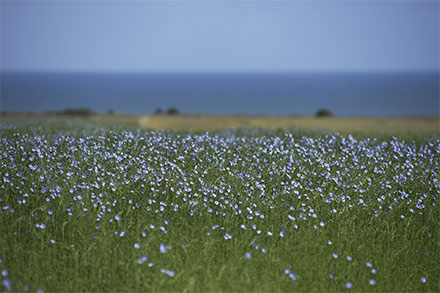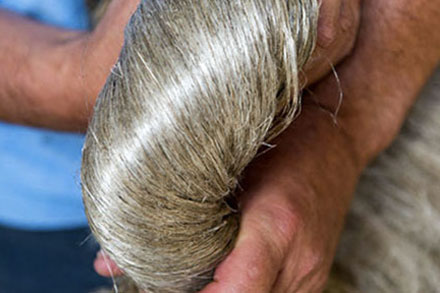European flax linen: Responsible cultivation and superior know-how The - Yarns - Fabrics - Première Vision Paris
Responsible cultivation and superior know-how come together at every stage of the European flax linen sector.
A continental exception, flax linen comes from local agricultural and textile industry traditions – from farming to spinning, weaving and knitting, all players work together to safeguard ethics in the workplace and to promote quality, innovation and proximity.

Flax Linen Field © V.Lappartient CELC

Flax Linen fibre ©S.Rande CELC
85% of the world’s flax is grown in Western Europe (France, Belgium, the Netherlands) – 117,000 hectares and 141,000 tons of long fibres in 2018. Flax needs no irrigation (99.9 % guaranteed), is GMO-free, regenerative and requires very few inputs. It is a zero-waste plant that can be retted directly on the ground in Europe, with no need for water or chemicals. Flax farming is reassuring to consumers for whom the importance of transparency, responsibility and eco-behaviour have become essential guarantees of quality. The sector’s commitments are represented by two labels: first, European Flax®, which certifies the European origin of Premium quality fibre for all outlets; and second, traceability, which when guaranteed by European companies every step of the way from the farm to thread and fabric, receives the Masters of Linen® label, a trademark that identifies a club of excellence in textiles. These labels mark the new international linen roads, and Europe – the epicentre of flax fibre production – is also the trend-setter.
©Be linen movie, from field to fashion – Benoit Millot, Goodideas
Linen, a laboratory of ideas
In just over ten years, flax fibres have contributed to the renewal of an evolving textile industry.
Sensual crease-resistant linen knits – developed through dedicated R&D and the perfection of linen fibres thin and regular enough for circular knitting – is now used by Portuguese, Italian and French knitters in pure linen and blends, from jersey to flannel. This recent economic reality now represents approximately ¼ of linen textiles in ready-to-wear. Easy to maintain, soft and pleasant to wear, linen knits are like a second skin, used even in lingerie.

Cool in the summer and warm in the winter, linen offers thermoregulation, absorption, moisture management and breathability, as well as guaranteeing optimum comfort for sportswear or leisurewear. Performance has been tested and proven in the laboratory*.
Through versatility and innovation, woven and knit linen fabrics are now the fibre of the future, for all four seasons.
* Study on Linen, comfort and performance, Cetelor laboratory for the European Confederation of Flax and Hemp, 2014.
